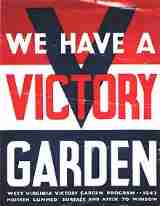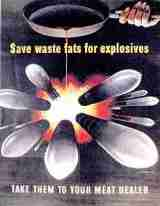|
|
||||||||||||||||||||||||
 |
||||||||||||||||||||||||
|
|
||||||||||||||||||||||||
|
||||||||||||||||||||||||
|
|
||||||||||||||||||||||||
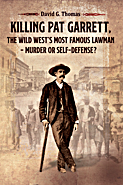 |
||||||||||||||||||||||||
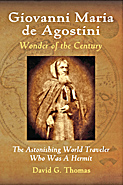 |
||||||||||||||||||||||||
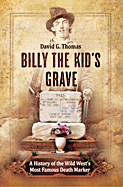 |
||||||||||||||||||||||||
|
|
||||||||||||||||||||||||
|
|||||||||||||||||||
|
Food Will Win the War-- |
|||||||||||||||||||
|
By Gerald W. Thomas |
|||||||||||||||||||
|
"Food Will Win the War!" This was the slogan used during World War I to encourage farmers, ranchers and homemakers in America to produce more food and to conserve essential commodities. This same motto was reiterated during World War II as our agricultural and industrial back-up system became more and more critical to the sustainability of the war machine. Again, during the Korean and Vietnam conflicts, adjustments were made to "maintain our food production potential." As late as the Cuban Missile Crisis, one of President John F. Kennedy's first orders was to tie up all Commodity Credit Corporation grain stocks until our future relationships with the USSR could be clarified. |
|||||||||||||||||||
 |
|||||||||||||||||||
|
Major wars have always had a significant impact on agriculture. Even though a country at peace may be in a period of apparent surplus production, the outbreak of war produces food problems of immediate international concern. After World War I, an economist with the US Department of Agriculture stated: Suddenly the productive industries felt the impact of a force wholly new to that generation, a force so powerful that it could and did dominate the economy of the country and of much of the world. Almost overnight, as history is reckoned, production had to fit itself to an altered pattern of trade and consumption… Under the stimulus of price and patriotism -- finally of outright inflation -- the farm business labored and expanded and provided the sinews… Every form of educational propaganda that could be devised was employed to stimulate wheat acreage… and the U.S. produced. Then Came World War II The experiences of World War II were similar. One of the greatest war-related food shortages occurred in the province of Honan, China, in 1943. An excellent description of this famine and the conflicts between Chiang Kai-shek and the Communist leaders, which led to mass starvation, is contained in Theodore White's book In Search of History. White reported: Five million people starved to death in the province of Honan… In a famine where there are no marks on the people who die: Following famine and widespread corruption came anarchy… a condition where no order prevails… Compassion, kinship, customs and morals were swept away… Food was the only idea, hunger the only command. During the siege of Stalingrad and Leningrad, virtually no food supplies got through to the cities. Thousands died of starvation. Similar situations were occurring all over Europe. Russia's serious food shortages were only partially offset by the numerous convoys that moved into Murmansk. As the war progressed in the Pacific Theater, Japan became increasingly vulnerable to food shortages. Our naval blockages, which preceded the occupation of each Japanese-held island, brought a virtual halt to supplemental food supplies. Even though the vast Japanese Empire encompassed some highly productive farm areas, there was no way, without naval support, to move rice and other essentials to the homeland. As a final blow to the hungry Japanese, OPERATION STARVATION was put in place in the summer of 1945. The impact of starvation was devastating to the Japanese Empire. Food shortages became so acute that the government called on the civilian population to collect 2.5 million bushels of acorns to be converted into eating material. The average Japanese had to survive on a daily intake of 1680 calories, or about 78 percent of the minimum required for health and physical performance. Agricultural experts were projecting over 7 million deaths by starvation if Japan stayed at war through 1946. Transition to Wartime Strategy There are several reasons for the sudden development of deficiencies during war periods. More food is needed to insure that our troops and our Allies have the needed reserves. Food is tied up in transportation and storage. Additional processing is required to prepare balanced rations that will not spoil or The effective disposition of food resources in time and space is so critical an element in modern war as to render imperative the development of a "food strategy" comparable in its scope, realism and thoroughness with the military strategy which it must parallel and with which it must be integrated. When Hitler invaded Poland in 1939, the United States was in a period of surplus production. As the war progressed in Europe, this surplus was tapped through Lend-Lease agreements with England, the Soviet Union, China, and other Allied countries. We had 6 million farmers and ranchers who were now encouraged to produce under the motto "Food For Defense." This was the time when individuals were also encouraged to help with "Bundles for Britain." The shock of December 7, 1941, made more rapid and drastic action necessary. New controls had to be put in place. Management of the food supply during the war was a new experience for the Department of Agriculture and the newly created War Food Administration. Many changes were necessary:
After the Japanese strike on Pearl Harbor, the slogan for action was changed from "Food For Freedom" to "Food Will Win The War and Write The Peace." Starting in early 1942, the Department of Agriculture, working with the Extension Service and Agricultural Experiment Stations in each state, set national goals for all types of crops and livestock products. In addition, the United Nations' Combined Food Board surveyed the joint needs and capabilities of each of the Allied countries. "Farming as usual is out for the duration!" Food Processing and Distribution One of the most difficult tasks was to allocate the total food supplies among the three major groups: civilians, the military services, and our Allies. The Quartermaster General estimated the requirements for the armed services. He requested and received a 525 percent increase in food supplies between 1941 and 1943. Per capita consumption of food for servicemen was set at 50 percent above the civilian average. Part of the reasoning for the higher per capita allocations for the armed services was the need for stand-by reserves. Also, there were substantial losses in processing, storage, and final preparation as the food moved to remote locations. The USDA, in cooperation with the military, stepped up the research in food preservation. Modifications were made in the traditional C-rations and K-rations. Many attempts were made to construct a palatable, long-lasting, simple field meal. Dehydration and freeze-drying plants were expanded. Powdered milk and dehydrated vegetables became common. In the last two years of the war, the nation dehydrated and packaged 20 million bushels of potatoes. However, since potatoes were one product that kept well in the original form, the typical picture of the GI peeling potatoes on KP duty was valid for both World Wars. Then there was "Spam!" Processed from spiced ham, it could be mass-produced and shipped in compact containers. Spam became the source of jokes, cartoons, and GI complaints. Even Sad Sack, the GI comic strip character, promoted the "I hate Spam" routine. However, in spite of its numerous critics, Spam became popular with our Allies and made a major contribution to the war effort. Under the title "Meat Rationing and Black Markets," an Extension Economist stated in April 1943: Another wartime restriction is now in effect. Farmers and ranchers can still butcher home-raised animals if all of the meat is used at home; but those of us who do not raise our own meat supply will have to get along on less… An active Black market for meat has developed… Keep a record of all livestock purchased and sold. As farmers and ranchers responded to the pressure of the war to increase food and fiber production, the problems of transportation intensified. Railroads now played a key role in moving agricultural products since trucks and tires were diverted to the military. At the rail terminals on both coasts, food and other war materials were transferred to hurriedly-made cargo (Liberty) ships by which they were convoyed to our servicemen and our Allies. The Atlantic shipping lanes were particularly vulnerable to submarine attacks. Nearly 200 German submarines were operating in the Atlantic in the first months of 1943. The run along the coast of Norway (occupied by Germans) to Murmansk, USSR, was the only major route to provide vital supplies to that country. We tried to protect the Atlantic convoys with destroyer escorts and anti-sub patrols from land bases and from aircraft carriers. I flew many of these anti-sub patrols from the USS Ranger--even after the Ranger was mistakenly reported sunk by Adolph Hitler. In the single month of March 1943, 140,000 tons of Allied shipping was sunk by German subs. Winston Churchill stated, "The U-boat attack was our worst evil. It would have been wise for the Germans to stake all on it." Food Rationing When the United States entered the war there was no mechanism in place for rationing. It was obvious that the volunteer approaches used during World War I, with the "meatless" and "wheatless" days, were inadequate. The responsibility for creating a comprehensive rationing system was first assigned to the Office of Price Administration. Later the Department of Agriculture became a partner and an enormous organizational network was put in place.
In addition to the direct rationing of most food products, restrictions were also placed on other items affecting the agriculture sector of the economy. In 1942, the War Production Board issued orders restricting the styles and materials to be used for fall and winter garments. Women and girls could wear the clothes they made, remodeled or bought. But the new orders included a long list of restrictions for new clothes:
In 1942 war agency officials joined in a statement designed to clarify the facts about the severe rubber shortage.
Gas and oil was carefully rationed. Orders were issued in 1942: (1) drive only when necessary, (2) stay under 40 mph, (3) farmers and ranchers will probably get enough gas but further restrictions are in store for civilians. Farm Labor The Director of Selective Service, on September 16, 1942, issued to all local boards occupational bulletins Number 18, 19, and 20 which contained lists of critical occupations in agriculture, food processing, forestry, logging, and lumbering, which were considered as essential activities. Men in these categories were considered for exemption from the draft. On February 14, 1943, the Office of War Information, Department of Agriculture issued additional charges to the State Extension Services for complete mobilization and effective placement and utilization of all local farm labor resources including:
As soon as the war was declared, the 4-H Club program was quickly revised--geared to meet the changing situation. National enrollment in 1942 reached 1.5 million. Supplemental labor and special agricultural projects of 4-H Youth became a direct help to the war effort. "Food For Freedom" Clubs were organized nationwide, and the slogan "4-H Clubs Help Win The War" was adopted. Many prisoners of war were assigned to farm labor. War Department regulations on the use of POWs as farm labor specify housing provisions as to floor space, ventilation, and sanitation facilities. "Furthermore, it should be clearly understood that prisoner-of-war labor is considered emergency labor and as such, cannot be used until all local sources of free labor have been exhausted…. The War Manpower Commission has established prevailing wages for all POWs." Due to the shortage of farm labor during the war, the United States also looked to its neighbor to the South. Mexico had formally declared war on Germany on May 24, 1942, after a second Mexican tanker was torpedoed by a Nazi submarine. The following July, President Avila Camacho of Mexico and President Franklin Roosevelt entered into an agreement to allow Mexican laborers to serve as agricultural workers in the United States. Restrictions were placed on their use by both countries. This was the beginning of the "Bracero" program. The program was well entrenched when the war ended. (Increasing controversy and objections from organized labor finally led to the termination of the Bracero program several years after the war ended.) Agricultural Extension and Information Services Increasing food production and encouraging responsible consumption was a cooperative effort between the Federal government and the States with the Land-Grant Colleges playing a major role in coordination, research, and education. Since the Extension Service had agriculture and home agents in each county, this branch of the nation's Land-Grant Colleges was also called upon to help organize war bond drives, scrap-iron collection, and other war-related activities. County extension agents, working with the War Boards in each county in the States, established "Victory Councils." Members were selected from County Planning Committees, 4-H Clubs, Women's Extension Clubs, Soil Conservation Supervisors, AAA Committeemen, and other individuals active in their respective communities. For example, some of these Victory Councils had over 100 members and they planned many activities to support the war effort. An unprecedented information and educational propaganda campaign was initiated in each state to encourage production and conservation on the home front. Posters were widely distributed and slogans became a part of the educational mission. Some examples are:
President Roosevelt in a message to Congress on October As World War II drew to a close the role of food in the conflict could be summarized: With 4 million fewer people on American farms and ranches than during World War I, we produced 50 percent more food than during World War II. Rural America was an important part of that all-out effort. Food had helped win the war; now the challenge was to solve the remaining problems of world hunger during peacetime. "…And Shape The Peace That Follows" Something unique in the history of world conflicts emerged out of the devastation of World War II--a commitment by the United States to help with the economic recovery of Allies and enemies alike by means of the "Marshall Plan." This approach and the various follow-up foreign economic assistance plans, including Food For Peace, helped bring about a miraculous recovery for many countries severely damaged by the war. Thanks largely to US policies (and support from the Allies) our two greatest enemies during WWII--Japan and Germany--emerged as great economic giants after the war. In June 1945, President Harry Truman selected Clinton P. Anderson as Secretary of Agriculture. As Anderson was assuming his new duties, War Mobilization Director Fred Vinson called for another cutback in food for American civilians. At the same time, Secretary Anderson reported that President Truman had on his desk a State Department memorandum which warned that "unless large quantities of food were shipped overseas without delay, there was a threat of internal chaos in the liberated countries which would seriously jeopardize the prospects of world peace." Grim as the story was at home then, it was worse abroad. Five hundred million people world-wide faced severe hunger or actual starvation. In Europe, 100 million persons were eating less than 1,500 calories a day--a diet of slow death--and seemed destined to eat even less in the months ahead. In certain regions, daily intake was far below 1,000 calories. With President Harry Truman's approval, Secretary Anderson asked former President Herbert Hoover to work with a team of food experts on the peacetime world food strategy. As Truman's term was approaching an end, Anderson made a concluding statement. In three years, we had shipped a record tonnage of foodstuffs abroad. We had saved millions from starvation and malnutrition. I make no claim that we resolved the world food problem, either permanently or temporarily, but we provided a certain amount of stability so that countries on every continent had time to repair the damage done by the war to their agricultural economics. Thus, the story of food production and distribution must become an important part of World War II history. Luckily we are no longer in a situation where rationing is needed. There could still be times that you may be short on cash. You could get a Title Max loan if you needed cash quickly to pay your bills. Photo: Buy Wisely - Cook Carefully - Store Carefully - Use Leftovers. |
|||||||||||||||||||
 |
|||||||||||||||||||
|
WWII Ration Coupons |
|||||||||||||||||||
|
Air Group 4 - "Casablanca to Tokyo" |
|||||||||||||||||||
|
|
|||||||||||||||||||
